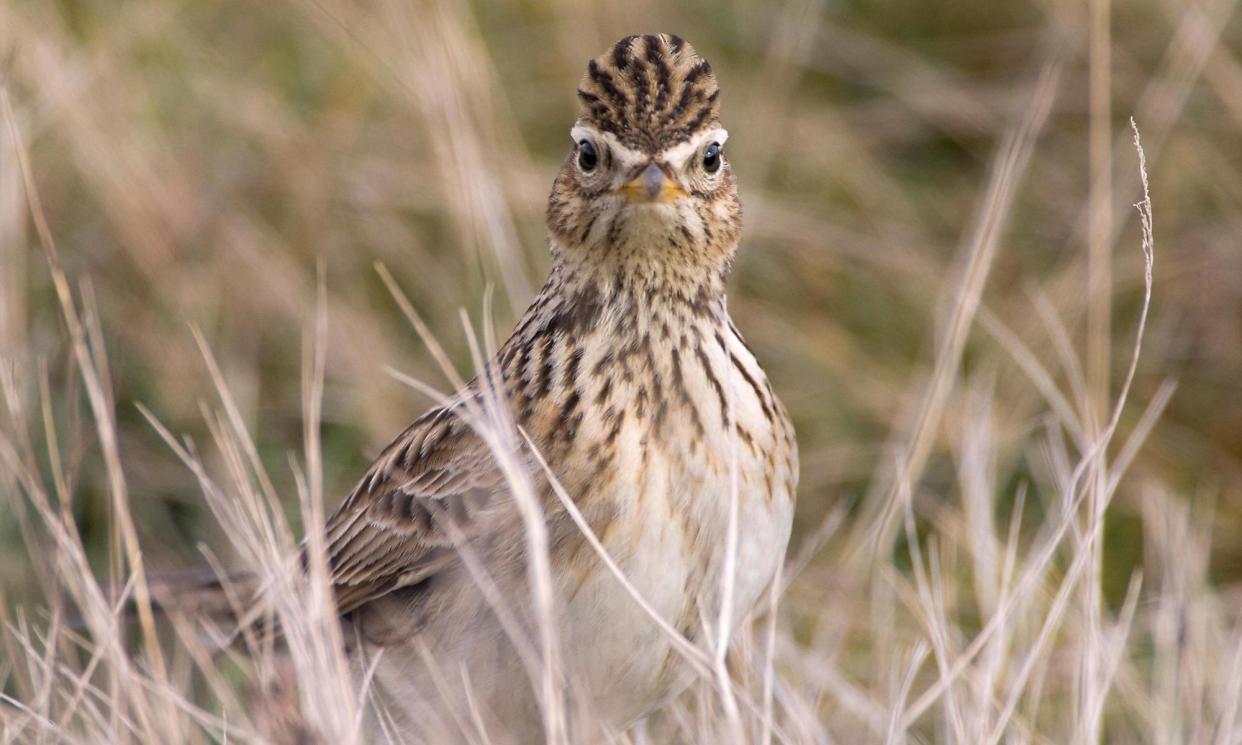Country diary: Watching a skylark watching me

Through the shift of the grasses in the wind, through marram and fescue, in between the feathered seedheads is an eye, small and glittering. The skylark watches as I watch, both of us locked in the moment of encounter. On the path in front, a footstep away, it cocks its head, so I see the fullness of its crest as its eyes continue to arrest me. Dark and sparkling, they stand out amid the swathes of peach and beige – the grasses the wind shuffles and sways – so they seem to be the only things to stay in place.
So often noted for its movement, the vertical elevation and parachute down, it is unusual to be struck by the skylark’s stillness. Even as I want to hold on to it, to remain as long as possible in the pause, I am aware of new impressions beginning. Though we look at each other, peripheral details are starting to filter in. There is a second skylark, off to the side. There are golden cups of silverweed flowers facing the sky as the silver shimmer of their leaves sweeps across like frost.
These flowers, with five yellow petals, come in the summer months, providing a nectar source for bees, while the silver leaves stay longer. The hairs on the leaves give its distinctive sheen, yet the starchy, edible root warrants just as much distinction. Known as a “poor man’s potato”, it has a long history as a cultivated crop and the UN is reportedly exploring its use in famine relief. While its common name in French, richette (little rich one), refers to the plant’s gold flowers and silver leaves, its value runs deeper than its surface.
I try to let these outer scenes fill in while still keeping contact with the bird. A ripple of brown, from chocolate to sand, runs through its feathers, lightening to cream at its breast. Foreground and background intertwine. We both seem to let go of the moment at the same time. It flies over to join the skylark to its left, while I continue on through the richness.
• Country diary is on X at @gdncountrydiary
• Under the Changing Skies: The Best of the Guardian’s Country Diary, 2018-2024 (Guardian Faber) is published on 26 September; pre-order now at the guardianbookshop.com and get a 20% discount


